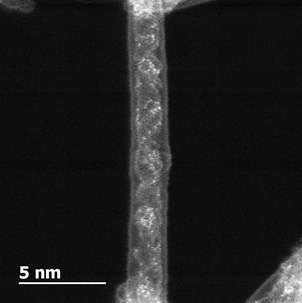ANR SMM1D : Addressing monomolecular magnets via 1D nanoframeworks
ANR SMM1D (ANR project : 2025-2029)
Project coordinator :
- Laurent Alvarez, L2C, Montpellier
Partners :
- L2C, Université de Montpellier
- ICGM Université de Montpellier
- LICSEN, CEA Saclay
- Université de Vienne, Autriche
ANR Collaborative Research Program – International (PRCI) :
- Contrat ANR-23-CE09-0035-01
- CE09 : Nano-objets et nanomatériaux fonctionnels, interfaces
Project goal :

One of the challenges in the field of molecular magnetism is to make single-molecule magnets (SMMs) controllable and accessible in practice. This is the objective of ourThe proposed project aims by confining SMMs in 1D nanostructures, such as metal-organic frameworks (MOFs), covalent organic frameworks (COFs), conductive polymers and single-walled carbon nanotubes (SWCNTs).
Unique molecular arrangements can be achieved and coordination reactions can be directional within 1D crystalline pores. Alteration of single-ion anisotropy, the ligand field and the lifting of zero-field degeneracy, as well as host-guest interactions (e.g., charge transfer, orbital hybridisation, Förster resonance energy transfer (FRET)), can lead to advanced magnetism (e.g., metamagnetism, single-molecule magnetism at higher temperatures and in weaker magnetic fields).
Electrical addressing of SMMs can be achieved by measuring magnetoconductance through electrically conductive hosts.

(Top left) Examples of metal complex and coordination polymer SMMs. (I) Double-decker phthalocyanine with lanthanide. (II) dinuclear copper-melamine complex SMMs. (III) trinuclear cobalt-melamine coordination polymer.
(Bottom left) Supramolecular organizations of SMMs in 1D nanostructures. The red circles denote metal/metal clusters, green rectangles are ligands (organic or inorganic) and black parallel lines are 1D nanostructures..
(Top right) Diagram describing the structure of SMMs and molecular interactions..
(Bottom right) Examples of host nanostructures with 1D open pores: The graphical image of MIL-53 with aluminium as an example of metal-organic frameworks (MOFs) with 1D pores